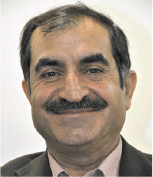Simulation and history matching of a shale gas reservoir using different models in Eagle Ford Basin
B. Xu A , M. Haghighi B and D. Cooke BA China University of Petroleum, Beijing; The University of Adelaide.
B Australian School of Petroleum, The University of Adelaide.
The APPEA Journal 52(2) 648-648 https://doi.org/10.1071/AJ11062
Published: 2012
Abstract
Eagle Ford Shale in South Texas is one of the recent shale play in the US, which began developing in late 2008. To evaluate the reservoir performance and make the production forecasting for this reservoir, one multi-stage fractured horizontal well was modelled and history matching was done using the available 250 days of production data.
Two different flow models of dual-porosity and multi-porosity have been examined. In the multi-porosity model, both approaches of instant and time-dependent sorption have been investigated. Also, two approaches of negative skin and transverse fractures were used to model the effect of hydraulic fracturing.
For history matching of early production data, all the models were successfully matched; however, all models predict differently for production forecasting. Comparing both production forecasts for 10 years, the multi-porosity model forecasts 14% more than dual-porosity model. This is because in the dual-porosity model, only free porosity is considered and no adsorbed gas in micro-pores is assumed; in multi-porosity model, both macro and micro porosities are active in shale gas reservoir.
It is concluded that the early production data is not reliable to validate the simulation and make the production forecasting. This is because in early production data, all gas are produced from the fracture system and the matrix contribution is not significant or it has not been started yet. Furthermore, the effect of matrix sub-division on the simulation was studied: the free gas in matrix can contribute to production more quickly when matrix sub-cells increase.

Xu is a PhD candidate for China University of Petroleum, Beijing. His research interest is about unconventional gas reservoir development such as shale gas and CSG. |

Manouchehr Haghighi is a senior lecturer at the Australian School of Petroleum, the University of Adelaide. He and his team are heavily involved in different research projects about both conventional and unconventional reservoirs. Before joining the University of Adelaide in 2009, he was associate professor of petroleum engineering at the University of Tehran, Iran. During 2000–09, he supervised more than 40 MSc and PhD students. From 1996 to 2000, he worked with the National Iranian Oil Company and was the director of a program for training of NIOC staff at several universities in the US, the UK, Canada, France, and Norway. He was a visiting professor at the University of Calgary from 2007 to 2008. He has published numerous articles in peer-reviewed journals, presented many papers at international conferences, and has served as a reviewer for several journals. Member: SPE. |

Dennis Cooke is the program manager for GeoFrac—the Australian School of Petroleum research program in unconventional resources. GeoFrac is bringing the ASP’s considerable experience in stress and geomechanics to problems involving fracture stimulation, stress, natural fractures, and brittleness. He joined the ASP in December 2010—specifically to start GeoFrac—following more than 20 years of experience in the oil and gas industry. His most recent experience includes 11 years as chief geophysicist for Santos. His industry experience includes research, seismic processing, exploration, development, and technical service. He has experienced exploration and development geoscience in Australia, Alaska, Indonesia, mid-continent USA, Gulf of Mexico, and the North Sea. He has published in the areas of seismic inversion, reservoir characterisation, and seismic migration. |
References
Bazan, L.W., Larkin, S.D., Lattibeaudiere, M.G., and Palisch, T.T., 2010—Improving production in the Eagle Ford Shale with fracture modelling, increased conductivity and optimized stage and cluster spacing along the horizontal wellbore. SPE Tight Gas Completions Conference, San Antonio, Texas, USA, 2–3 November, Paper 138425.Cipolla, C.L., Lolon, E.P., Erdle, J.C., and Rubin, B., 2009—Reservoir modeling in Shale-Gas reservoirs. SPE Eastern Regional Meeting, Charlestion, West Virginia, USA, 23–25 September, Paper 125530.
Inamdar, R., Malpani, K., Atwood, K., Brook, A., Erwemi, T., Ogundare, D., and Puecell. D., 2010. Evaluation of stimulation techniques using microseismic mapping in the Eagle Ford Shale. SPE Tight Gas Completions Conference, San Antonio, Texas, USA, 2–3 November, Paper 136873.
Mullen, J., 2010—Petrophysical characterization of the Eagle Ford Shale in South Texas. The Canadian Unconventional Resources & International Petroleum Conference, Calgary, Alberta, Canada, 19–21 October, Paper CSUG 138145.
Stegent, N.A., Wagner, A.L., Mullen, J., and Borstmayer, R.E., 2010—Engineering a successful fracture-stimulation treatment in the Eagle Ford Shale. SPE Tight Gas Completions Conference, San Antonio, Texas, USA, 2–3 November, Paper 136183.


